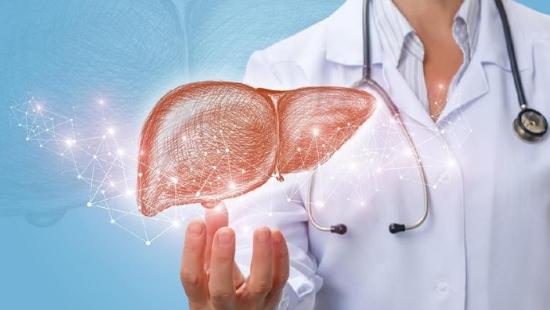Though we cannot cure Asthma, its symptoms can be controlled by us.
Asthma is a respiratory condition that causes the airways to narrow and swell, besides generating excess mucus, making breathing difficult, resulting in coughing, whistling (wheezing) on exhalation, and shortness of breath.
Asthma may be a mild annoyance for some people. However, for some, it can be a massive concern that prevents them from carrying out their everyday lives and can even lead to a life-threatening asthma attack.
Asthma Symptoms
During an asthma attack, airways linings swell, which causes air passages to narrow and reduces airflow into and out of the lungs. Asthma symptoms differ from person to person. One may have infrequent asthma attacks or face symptoms at specific times like while exercising — or experience frequent chronic asthma signs like-
- Breathing troubles.
- Tightness and pain experienced in the chest.
- Wheezing is commonly seen in children who have asthma.
- Shortness of breath and coughing making it difficult to sleep.
World Asthma Day
The Global Initiative for Asthma (GINA) helps organize World Asthma Day (WAD) every year on the first Tuesday in May to raise awareness about asthma and its care around the world. Even during the ongoing COVID -19 pandemic, GINA encourages asthmatics to practise good hand washing hygiene, maintain social distance, and not skip their asthma medications as prescribed by their doctor.
Types of Asthma
- Adult-Onset Asthma
Adult-Onset asthma happens when a doctor has diagnosed asthma in adults over 20. The factors include different illnesses, viruses, or infections or even a bad cold or a bout with the flu. Though smoking does not cause adult-onset asthma; however, it may provoke asthma symptoms among smokers and second-hand smokers.
- Allergic Asthma
The most common form of asthma is allergic asthma. You may have allergic asthma if you have trouble breathing during allergy season. About 90 percent of children with asthma have allergies, compared to just 50 percent of adults with asthma. Inhaling allergens (or allergy triggers) such as pollen, dust mites, or mold causes allergic asthma symptoms.
- Asthma-COPD Overlap
When a person has asthma and chronic obstructive pulmonary disease (COPD), they develop asthma-COPD overlap syndrome (ACOS- COPD). Persistent airflow restriction with asthma symptoms is a sign of ACOS.
- Exercise-Induced Bronchoconstriction (EIB)
Exercise-induced bronchoconstriction, or EIB “exercise-induced asthma”, is seen when one experiences breathing troubles, start’s wheezing, or coughing while exercising. While EIB affects up to 90% of people with asthma, not everyone with EIB may develop asthma.
- Nonallergic Asthma
Intrinsic asthma (also known as nonallergic asthma) develops later in life as a result of recurrent upper and lower respiratory tract infections. Weather conditions, exercise, illnesses, and stress are all causes of nonallergic asthma.
- Occupational Asthma
Occupational asthma happens at the workplace when a person inhales harmful chemical fumes, gases, dust, or other substances. In occupational asthma, the substances commonplace in the workplace cause the airways of the lungs to swell and narrow, which leads to wheezing attacks, shortness of breath, coughing, and chest tightness.
Risk group for Asthma
- Asthma can impact people of all ages, including children, adolescents, adults, and the elderly.
- Though asthma is not infectious, seasonal viral respiratory infections like the common cold and flu can trigger asthma.
- In children, asthma frequently triggers allergy. However, asthma, which starts in adulthood, is less allergic.
- In conditions of controlled asthma, asthma subjects can even perform well in sports.
- Asthma controllable drugs include low-dose inhaled steroids.
- Asthma triggers include cold air, extreme emotional arousal such as anger or fear, and physical exercise, certain medications (such as beta-blockers which are used to treat high blood pressure, heart conditions, aspirin, non-steroid anti-inflammatory drugs, and migraine).
How is Covid and Asthma related?
According to a growing body of research on Covid-19, the virus’s correlation to asthma is much more complicated than experts predicted.
For people with asthma, the COVID-19 virus may be hazardous. Asthmatics should be aware that they are not at an increased risk of contracting coronavirus. However, they must be extra cautious in shielding themselves from the infection by washing their hands, using facemasks, practising social distancing and staying away from sick people. COVID-19 symptoms may be more severe, and those with asthma may have worse outcomes. To avoid asthma exacerbations, people with asthma should continue to take their prescribed medications.
Asthma Precautionary Tips
- Identify Triggers of Asthma
Certain asthma triggers like air pollution, allergies, cold air, cold or flu virus or sinusitis can aggravate asthma.
- Avoid Smoking
Asthma and smoke can be hazardous, like incense, candles, flames, and fireworks. These are Asthma triggers and hence must be avoided. Asthma exacerbates by smoking; thus, if you smoke, seek assistance in quitting.
- Avoid Colds
Avoid close contact with people who have symptoms of flu or covid, because catching it will make your asthma symptoms worse. Wash your hands regularly, maintain social distancing use facemasks.
- Take Prescribed Asthma Medications
Long-term asthma medications go a long way in preventing any serious asthma symptoms. Prescription asthma medications are needed to be taken as scheduled. These medications will ease inflammation from the airways and keep asthma under control.
- Use a Home Peak Flow Meter
At home prefer using a peak flow meter, which shows how well air is moving through your lungs. During an asthma attack, your airways narrow. Peak flow meter helps you to know narrowing of airways much before your Asthma symptoms onset. This gives you time to take the medications before any serious happenings occur.
How to take care of your lungs?
Take these steps to optimize your pulmonary health-
- Hydrate Yourself
Your lungs will be lubricated, if you are well hydrated. This will allow irritants and mucus to thin out. Drink half your body weight in ounces of water. For instance, a 150-pound woman can drink 75 ounces of water per day (9 cups of water per day).
- Take your Diet
We cannot underestimate the importance of food choices for the lung and our immune system health. Various foods can help the lungs to be healthy and the body to reduce inflammation in the airways. Fruits, herbs, and omega-3-rich foods are good sources of vitamins and antioxidants. Apples, green tea, black coffee, raw seeds and nuts, broccoli, cauliflower, oranges, pumpkin, and garlic are just a few of them.
- Practice Exercise
Physical exercise enhances the flow of oxygen in your bloodstream, which leads to increased airflow to your muscles, heart, and lungs. For a healthy lung, doctors recommend 30 minutes of moderate exercise 5 days per week.
- Limit your exposure to Allergens
There is a direct link between lungs irritation and allergen exposure. The more is the exposure, the more inflamed they become. Reduce your exposure to aerosols, cleaners and hairsprays, pollens, and smoky environments that could be your possible asthma triggers.
- Don’t Smoke
The key to healthy lungs is to quit smoking, be it be a cigarette, cigar, or vaping smoke. Smoking is a leading cause of lung cancer, besides inhaling harmful gases makes the lungs more inflamed. Inflammation causes mucus build-up that impacts the movement of oxygen into your bloodstream.
- Oral Health
Oral health is very crucial to protect your teeth, gums, and tongue. Brush and floss twice per day prevents plaque build-up and restricts the probable occurrence of potential infections in your mouth, which could migrate from your mouth into your lungs, affecting their functioning.
- Cure your sore throat
It is vital to soothe your sore throat, to restrict the inflammation reach out to your lungs. Even with covid symptoms soothe your throat by drinking warm liquids like water with a squeeze of lemon, along with green tea or black coffee. Warm liquids not only soothe the throat, but also add to increase hydration and the flow of gastric juices in the stomach that prevents inflammation.
Asthma and Covid teleconsultation with Gigadocs
Severe asthma attacks can be life-threatening. With ever-increasing numbers of Covid cases, prefer to consult your doctor on the phone or over a video call over the Gigadocs app for emergency treatment. Signs and symptoms of a breathing problem emergency include:
- Rapid worsening of shortness of breath
- Shortness of breath while doing minimal physical activity
- If your medication doesn’t ease your symptoms
- Overdose of asthma medication.
Asthma-like Covid often changes its symptoms over time. Thus, it is vital to regularly consult experienced doctors on the Gigadocs app to discuss your symptoms and make any needed treatment adjustments. Download the Gigadocs app from-
- IOS App – apple.co/2W2iG4V
- Android App – bit.ly/33AQoRC
To know more and schedule a Virtual Consultation demo, Email, at info@gigadocs.com.




